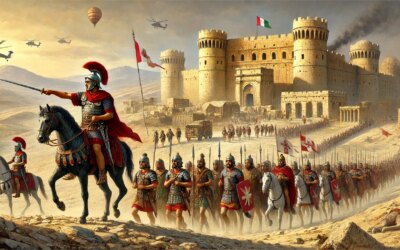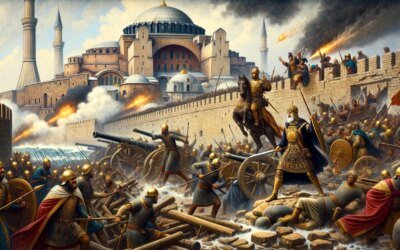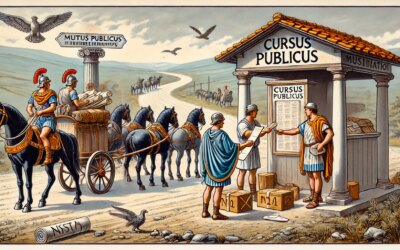Introduction: The Emperor at the Edge
By 370 AD, the Roman Empire faced increasing pressure along its borders, none more perilous than the Rhine frontier. Under the rule of Emperor Valentinian I, the western empire embarked on a series of military and infrastructural reforms to secure its northern perimeter against the growing threat of Germanic incursions. Valentinian, a seasoned general turned emperor, took a hands-on approach—personally inspecting fortifications and directing defensive operations across the volatile frontier.
Valentinian I: Soldier of the West
Valentinian I, who reigned from 364 to 375 AD, was a pragmatic and forceful leader. A product of the Roman military establishment, he rose through the ranks and was chosen emperor after the death of Jovian. From the outset, he focused on stabilizing the western provinces, delegating the East to his brother Valens. His military mindset made him a formidable opponent to Rome’s enemies and an ardent reformer of the empire’s defenses.
The Threat on the Rhine
The Rhine River marked a key boundary between Roman Gaul and a constellation of Germanic tribes. Throughout the 4th century, the pressure from Alemanni, Franks, and Burgundians intensified. Raids across the border became more frequent, and Roman infrastructure, long neglected, was in disrepair. Valentinian saw firsthand the deteriorating state of Rome’s defenses and resolved to reinforce the frontier.
Rebuilding the Limes
Valentinian launched an ambitious program to repair and expand the limes—the fortified line of watchtowers, walls, and forts that had once secured the Rhine. He traveled extensively, particularly in Gaul and Germania Prima, where he personally supervised construction efforts. His engineers rebuilt fortresses, established new strongholds, and restored military roads. Defensive lines were designed not just to repel attacks, but to allow for rapid response and communication across sectors.
Military Discipline and Reform
Beyond physical defenses, Valentinian reorganized the frontier army. He enforced discipline, punished corruption, and ensured that supplies reached garrisons. Troops were trained rigorously, and units stationed in frontier zones were given new weapons and fortifications. He also maintained diplomatic relations with some tribal leaders, using a blend of force and negotiation to maintain stability along the Rhine.
The Strategic Importance of the Rhine
The Rhine frontier wasn’t merely a military zone—it was a vital artery of trade, culture, and communication. Valentinian understood that losing control of this region would mean exposing the heartland of the Western Empire. His efforts to stabilize and fortify the Rhine held the line for much of his reign, even as new threats loomed from the East.
Challenges and Death at the Danube
Valentinian’s later years were marked by internal dissent and renewed pressure on other frontiers. In 375 AD, while negotiating with Quadi envoys near the Danube, he reportedly suffered a fatal stroke after an outburst of rage—a fittingly dramatic end for a man of intense energy and unyielding will. His death would usher in a period of political fragmentation and renewed barbarian invasions.
Conclusion: Fortress of the West
Valentinian I’s efforts on the Rhine stand as a testament to his commitment to the defense of the Western Empire. Though his reign was relatively short, his legacy as a restorer of Rome’s military strength is enduring. Atop the muddy banks of the Rhine, amidst forests and snow, the emperor forged a wall—not just of stone, but of resolve. For a generation, it held firm, a last defiant bulwark against the gathering tide of history.






